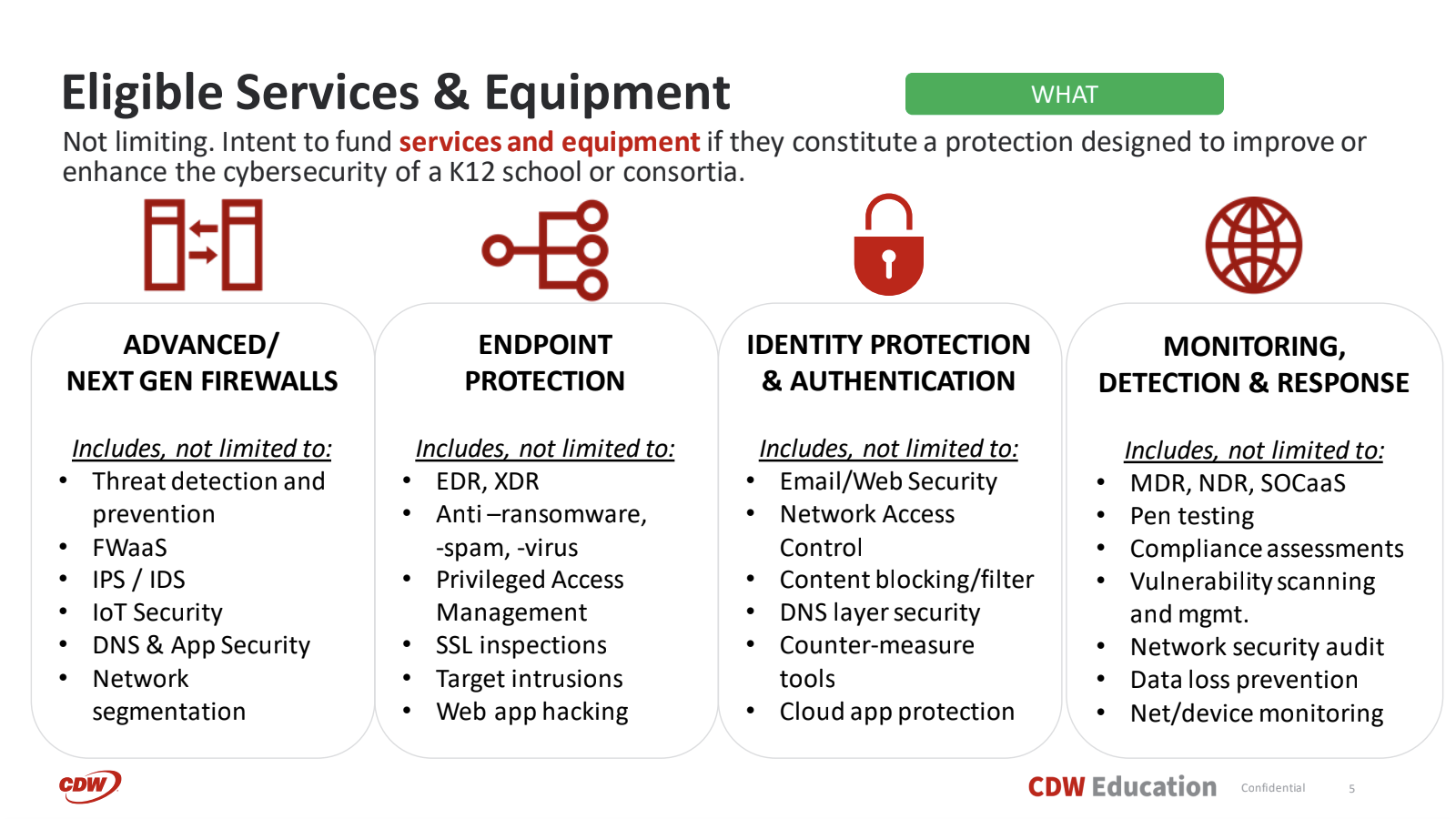As schools prepare to apply for the Federal Communications Commission’s Schools and Libraries Cybersecurity Pilot Program, they need to ensure they understand the application process and the guidelines around the funding they would receive if selected.
The FCC simplified its application process as part of the approved pilot, possibly in response to feedback from the community that the initial application was too time-intensive.
Now, schools will apply in a two-step process, the first of which opens to applicants September 17, 2024 to November 1, 2024. The change includes a simpler first step, where schools will only need to provide a simplified and summarized version of their cybersecurity posture and plans. If selected to move beyond the first stage of the process, schools will then need to provide more detailed and robust plans to the FCC with their proposed projects.
MORE ON THE PILOT PROGRAM: Increase your chances of winning funding.
Applications Will Reflect Demand for Cybersecurity Funding
Although the funding available through this pilot program is limited — the approved amount is $200 million — all interested schools should apply.
A high number of applications will show the FCC and other government agencies that the demand for cybersecurity funding is high. Additional federal programs and funding pools for cybersecurity aren’t guaranteed after this pilot program, and an overwhelming response during the application process will help make the case that it’s needed for the highly targeted K–12 market.
Additionally, the FCC is looking for a diverse range of applications. It is hoping to use the program for its own research purposes to determine where schools are looking to invest in cybersecurity tech, and receiving applications from a variety of school types will help it gather data.
Click the banner to explore the state of cybersecurity in education with a new report.
Schools Can Cover Costs Across Four Technology Categories
The approved funding pilot covers four categories of eligible cybersecurity services and equipment:
- Advanced/Next-Generation Firewalls
- Endpoint Protection
- Identity Protection and Authentication
- Monitoring, Detection and Response
The FCC admits that the available funding to schools — $13.60 annually per student for three years — won’t be enough to cover all of the categories in full. It will be up to schools to determine their own needs and whether they want to use the funds to invest in one category in depth or target portions of multiple categories.
Whatever they choose, schools must make a case for it to the FCC in their applications. How they’re choosing to invest the funding won’t impact their likelihood of being selected for the pilot, but a detailed plan can improve their chances.
There are four categories of eligible cybersecurity services and equipment. Graphic courtesy of CDW
Budget Carefully for the FCC’s Cybersecurity Pilot Funding
K–12 IT leaders should meet with their finance departments when applying for the Schools and Libraries Cybersecurity Pilot Program. Schools will need to determine how they’re funding their portion of the cybersecurity upgrades they purchase through the program if selected.
The money allocated to schools is at a prediscounted rate, with discounts and prioritization equal to schools’ Category One discounts, up to 90%. Hypothetically, this means that if a school is approved for $100,000 and has a discount of 50%, the FCC will cover $50,000 and the school will have to pay for the other $50,000.
DISCOVER: A good cyber resilience strategy is essential to business success.
IT and finance departments will also need to work together to determine whether they’re using the BEAR or SPI invoicing method.
Schools using the Billed Applicant Entity Reimbursement method will pay for services or solutions in full, and later will be repaid by the Universal Service Administrative Company. This allows schools to move forward with upgrades on their own timelines and be compensated later. Schools using the Service Provider Invoicing method will need to wait for a commitment letter from the USAC. Then, the service provider will invoice the school and USAC individually for their portions of the total cost.
A partner such as CDW can help schools understand the Schools and Libraries Cybersecurity Pilot Program, evaluate their cybersecurity posture and learn about cybersecurity technologies.
This article is part of the ConnectIT: Bridging the Gap Between Education and Technology series. Please join the discussion on Twitter by using the #ConnectIT hashtag.
![[title]Connect IT: Bridging the Gap Between Education and Technology](http://www.edtechmagazine.com/k12/sites/default/files/articles/2014/05/connectit.jpg)
Editor's note: This article was originally published on March 8, 2024.








![[title]Connect IT: Bridging the Gap Between Education and Technology](http://www.edtechmagazine.com/k12/sites/default/files/articles/2014/05/connectit.jpg)




